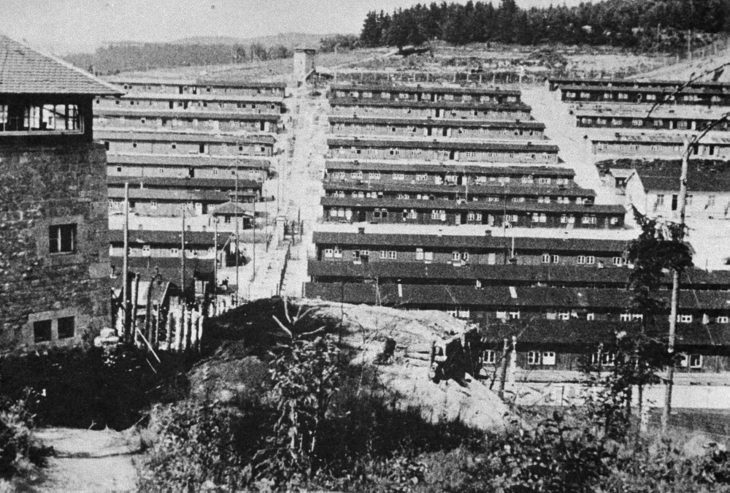
Word of the Day: Nefandous
Today’s word of the day, thanks to nothing in particular, is nefandous. Nefandous is an adjective that means “unfit to be spoken of” (https://www.merriam-webster.com/dictionary/nefandous), although M-W says that the word is archaic. Dictionary.com does not include the word in its lexicon. Yourdictionary.com gives two synonyms: unspeakable and appalling (https://www.yourdictionary.com/nefandous).
According to etymonline.com, the word means “’not to be spoken of, abominable, very shocking to the general sense of justice or religion’” (https://www.etymonline.com/word/nefandous#etymonline_v_45393). It entered the language in the “1630s, from Latin nefandus ‘unmentionable, impious, heinous,’ from ne-, negative particle (see un- (1)), + fandus ‘to be spoken,’ gerundive of fari ‘to speak,’ from PIE root *bha- (2) ‘to speak, tell, say’” (ibid.). A gerundive is a form of the verb that acts as an adjective; in Classical Latin, it is different from a gerund (which is a verb form used as a noun) and from a participle. In later Latin, the gerundive began to merge with the participle, but there are vestiges of the gerundive in some Romance languages. The gerundive form usually carries a sense of obligation to do the thing described in the gerundive.
The PIE root *bhā- “forms all or part of: abandon; affable; anthem; antiphon; aphasia; aphonia; aphonic; apophasis; apophatic; ban (n.1) “proclamation or edict;” ban (v.); banal; bandit; banish; banlieue; banns (n.); bifarious; blame; blaspheme; blasphemy; boon (n.); cacophony; confess; contraband; defame; dysphemism; euphemism; euphony; fable; fabulous; fado; fairy; fame; famous; fandango; fatal; fate; fateful; fatuous; fay; gramophone; heterophemy; homophone; ineffable; infamous; infamy; infant; infantile; infantry; mauvais; megaphone; microphone; monophonic; nefandous; nefarious; phatic; -phone; phone (n.2) “elementary sound of a spoken language;” phoneme; phonetic; phonic; phonics; phono-; pheme; -phemia; Polyphemus; polyphony; preface; profess; profession; professional; professor; prophecy; prophet; prophetic; quadraphonic; symphony; telephone; xylophone” (ibid.).
The PIE *bʰ is an aspirated bilabial stop; aspiration “is the strong burst of breath that accompanies either the release or, in the case of preaspiration, the closure of some obstruents. In English, aspirated consonants are allophones in complementary distribution with their unaspirated counterparts, but in some other languages, notably most South Asian languages (including Indian ones) and East Asian languages, the difference is contrastive” (https://en.wikipedia.org/wiki/Aspirated_consonant). Contrastive means that an aspirated consonant makes a word mean something different from the same word without the aspirated word. When I was in elementary school, my teachers insisted that we pronounce what as if it were spelled hwat, with a strong preaspiration, to differentiate it from watt and because it was spelled what instead of hwat.
The bh sound changes from PIE to the modern descendants of PIF to b, p, and even f, which is why the PIE root becomes so many different words that look so different from one another.
On this date in 1938, the concentration camp at Flossenburg came into use.
Most of us are familiar with the names of Nazi concentration camps: Buchenwald, Auschwitz, and Dachau. But there were many more, and these various camps were established for a variety of purposes. For instance, the first concentration camp was in an old school at an airfield in Nohra, in central Germany, fairly close to Weimar. It was established in 1933, shortly after Hitler gained power, and it housed, almost exclusively, members of the communist party. In other words, the initial purpose of the concentration camps was to remove political opponents. It was only later, in 1942, that the Nazis created the Final Solution to the Jewish Question and began to use the concentration camps to murder the Jews of Poland and other occupied German lands.
Between 1933 and 1942, another use for the concentration camp was forced labor, and that was the reason for Flossenburg. The head of the SS, Heinrich Himmler, employed concentration camps to expand the economic power of the Nazis. During the 1930s, the Nazis were building monumental constructions in the stripped classical style of Nazi architect Albert Speer. One of the favored building materials was granite, and there were granite mines near Flossenburg. So Himmler and the SS forced the prisoners to mine the granite.
The initial group of prisoners at Flossenburg came from Dachau and were used to build the camp, including installing barbed wire. Over four dozen of these prisoners died in that initial construction. Some of those early prisoners were murdered, dressed in Polish military uniforms, and used in a false flag operation to justify the invasion of Poland. Eventually more prisoners were transferred from Dachau, and eventually many more died.
Flossenburg was not as awful a place as Buchenwald or Auschwitz, but that doesn’t mean that what happened there was okay. Forced labor is never okay, whether it is in Nazi concentration camps, sugar cane plantations, chain gangs, or Chinese re-education internment camps. Imprisoning people for who they are or what they think is and always will be nefandous.
Today’s image is a “view of Flossenbürg concentration camp after liberation by the US Army 99th Infantry Division, April 1945. US Army photo” (https://en.wikipedia.org/wiki/Flossenb%C3%BCrg_concentration_camp#/media/File:Flossenburg.jpg).